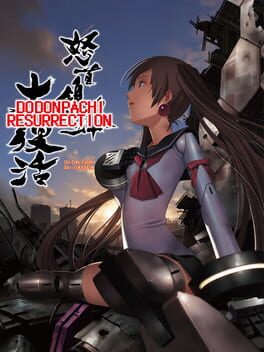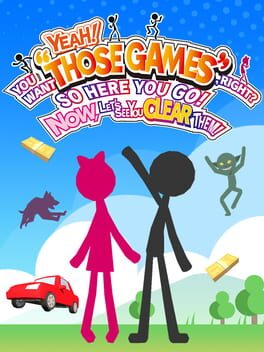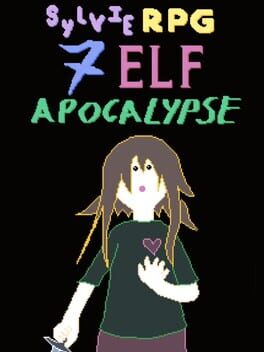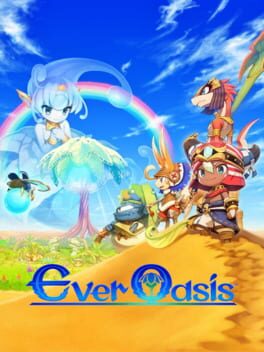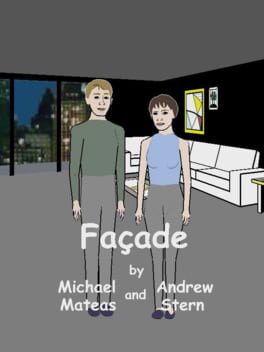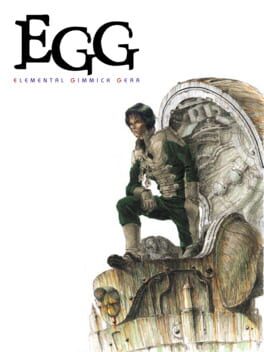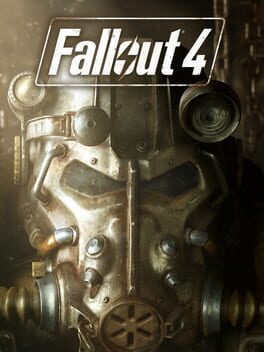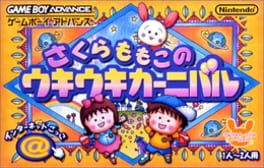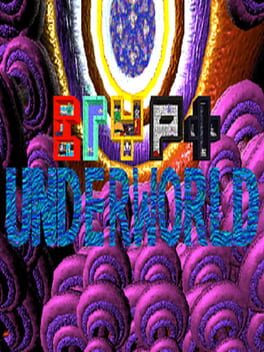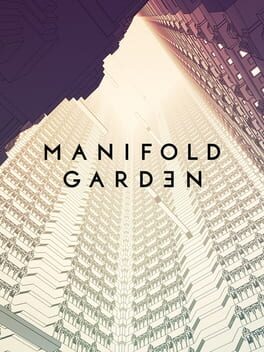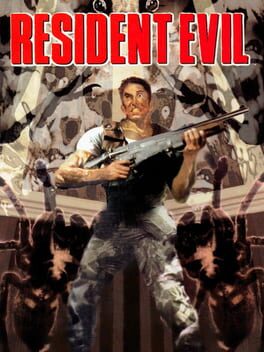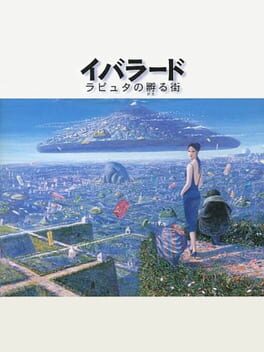MelosHanTani
BACKER
I got DDP Resurrection because I watched a review for a switch release of DDP DOJ, and then bought the wrong game. This game feels so WILD, you're pushed to be super aggressive, something the generous auto-bomb system seems to hint at... in the few stages I tried to learn (just 1-1 and 1-2) it felt like you had to be really preventative, like quickly managing all the escalating risks that would fly onto the screen - on top of the actual bullet avoidance. Being able to hyper your way out of a situation or to play it safe felt really cool.
I appreciate all the thought that goes into the design, the subtle ways in which bullet patterns escalate and build on each other, the fun of learning stages and then pulling the whole thing off in the end.
Of all things, shmups remind me the most of being a kid and trying to memorize songs on the piano, working through harder sections one at a time to try and pull the whole thing off ("Playing for Survival") and then going back and actually working in personal flair/expression ("Playing for Score"). Sort of like with shmups, I never really got too much into that hobby as a 'soloist' beyond playing in orchestra/band. And I don't think shmups and playing music are really that alike, but there does seem to be something similar in how you have to train/learn at both, and the way in which stuff that feels impossible slowly becomes possible.
Actually, it's hard not to try and compare shmups to many things in life! They (like other arcade games) really distill the whole difficulty/learning thing down to some pure essence. But in particular, these bullet hell shmups feel like they're compressing that essence even further - it's an interesting design space to learn from and experience.
I appreciate all the thought that goes into the design, the subtle ways in which bullet patterns escalate and build on each other, the fun of learning stages and then pulling the whole thing off in the end.
Of all things, shmups remind me the most of being a kid and trying to memorize songs on the piano, working through harder sections one at a time to try and pull the whole thing off ("Playing for Survival") and then going back and actually working in personal flair/expression ("Playing for Score"). Sort of like with shmups, I never really got too much into that hobby as a 'soloist' beyond playing in orchestra/band. And I don't think shmups and playing music are really that alike, but there does seem to be something similar in how you have to train/learn at both, and the way in which stuff that feels impossible slowly becomes possible.
Actually, it's hard not to try and compare shmups to many things in life! They (like other arcade games) really distill the whole difficulty/learning thing down to some pure essence. But in particular, these bullet hell shmups feel like they're compressing that essence even further - it's an interesting design space to learn from and experience.
Bought this on a whim after seeing it on Twitter. Overall it's played pretty straight - you get like 4 or 5 of these 'mobile game ad' minigames and you can unlock harder versions of each. There's something to it that reminds me of Make 10 for the DS, almost? Very simple premises that become more complex, but never really approach 'puzzle' so much as a slightly longer and straightforward exercise.
I was sort of hoping for some kind of weird twist or extreme version of these sorts of games, but ah well.
I was sort of hoping for some kind of weird twist or extreme version of these sorts of games, but ah well.
Great BUMP Action RPG, and a great length at about 1-2 hours! https://sylvie.itch.io/sylvie-rpg
I like how compact the world is and how that allows you to switch between modes of playing quickly - trying to open up each room's secret entrances, grinding for money, trying to survive and form a mental map of an area... the game has a lot of playfulness in its secrets designs that show lineage from older action RPGs like Golvellius, Ys. That era of games are a lot of fun, but they sometimes have moments where moon logic or difficult mapping efforts are needed to complete them. I enjoy that to an extent, but I like the way that Sylvie RPG takes some of the mystique those games achieve but presents it in a way that allows the game to stand more on its own as a whole (without requiring the need to look up a guide.) It's a hard balance to keep a game feeling mysterious and challenging without sending people off to the guides, and I think this game balances everything well. There's secrets I couldn't figure out, but I'm proud to have cleared the game on my own!
Additionally, if you pay for the game you can get bonus files, including a design analysis of the game. It was interesting to read this for a number of reasons. For one, the game cites Angeline Era as a minor influence to one aspect of the combat (opting for Angeline Era style bump-combat (you can attack an enemy from any direction), vs. Ys's "hit the enemy at an angle").
This is an interesting thing to see because Sylvie RPG was made and released while Angeline Era is still in development. There's very few bump action games out there, so being able to play Sylvie RPG and read about it was useful as a point of comparison.
In the design notes, Sylvie describes the "Three Modes of Play" idea that was a guiding principle - in this case, "Exploration", "Resource Gathering" and "Stage Clearing". It's three modes of play that many Action Adventures/RPGs tend to have in various ratios. I think the choices the game makes (de-emphasizing Stage Clearing for the other two) work well. Sylvie RPG does feature 'stages' (defeating bosses) but much of the time is spent poking around the screens and trying to uncover secret caves on each screen. These range from grottos you can buy swords in, to shortcuts, to little helper cats who will come fight with you.
There's neat decisions related to this - like how bosses respawn you near the fight entrance, but you start with the stats you initially reached the boss at.
I also found it interesting that Sylvie RPG's conclusions about defense are similar to the ones we have in Angeline Era, in that for games with more of a focus on action and smaller numbers (where enemies often take a few hits to kill), defense items are hard to balance. Because flatly making everything in the game less threatening is not always an ideal choice. I liked Sylvie RPG's solution which lets you get shields, which negate most damage, but you drop the shield if hurt (and have to pick it up, which can be dangerous.)
Anyways, above all else it's an interesting game world to explore. Go play it! Support bump combat
I like how compact the world is and how that allows you to switch between modes of playing quickly - trying to open up each room's secret entrances, grinding for money, trying to survive and form a mental map of an area... the game has a lot of playfulness in its secrets designs that show lineage from older action RPGs like Golvellius, Ys. That era of games are a lot of fun, but they sometimes have moments where moon logic or difficult mapping efforts are needed to complete them. I enjoy that to an extent, but I like the way that Sylvie RPG takes some of the mystique those games achieve but presents it in a way that allows the game to stand more on its own as a whole (without requiring the need to look up a guide.) It's a hard balance to keep a game feeling mysterious and challenging without sending people off to the guides, and I think this game balances everything well. There's secrets I couldn't figure out, but I'm proud to have cleared the game on my own!
Additionally, if you pay for the game you can get bonus files, including a design analysis of the game. It was interesting to read this for a number of reasons. For one, the game cites Angeline Era as a minor influence to one aspect of the combat (opting for Angeline Era style bump-combat (you can attack an enemy from any direction), vs. Ys's "hit the enemy at an angle").
This is an interesting thing to see because Sylvie RPG was made and released while Angeline Era is still in development. There's very few bump action games out there, so being able to play Sylvie RPG and read about it was useful as a point of comparison.
In the design notes, Sylvie describes the "Three Modes of Play" idea that was a guiding principle - in this case, "Exploration", "Resource Gathering" and "Stage Clearing". It's three modes of play that many Action Adventures/RPGs tend to have in various ratios. I think the choices the game makes (de-emphasizing Stage Clearing for the other two) work well. Sylvie RPG does feature 'stages' (defeating bosses) but much of the time is spent poking around the screens and trying to uncover secret caves on each screen. These range from grottos you can buy swords in, to shortcuts, to little helper cats who will come fight with you.
There's neat decisions related to this - like how bosses respawn you near the fight entrance, but you start with the stats you initially reached the boss at.
I also found it interesting that Sylvie RPG's conclusions about defense are similar to the ones we have in Angeline Era, in that for games with more of a focus on action and smaller numbers (where enemies often take a few hits to kill), defense items are hard to balance. Because flatly making everything in the game less threatening is not always an ideal choice. I liked Sylvie RPG's solution which lets you get shields, which negate most damage, but you drop the shield if hurt (and have to pick it up, which can be dangerous.)
Anyways, above all else it's an interesting game world to explore. Go play it! Support bump combat
2017
Good example of a game that is badly in need of both design craft and narrative theme. On paper, the game sounds interesting enough: revive a town through shops and farming, adventure the nearby landscape with shopkeepers, dive into dungeons..
Customizing the town (at least a few hours in) only involved placing a few shops and some other items to optimize their income. Restocking shops involves a process of farming for particular materials, walking into the shop and restocking. As the game gets bigger you have more shops to restock. I guess the idea is that the player was supposed to be sort of a supplier for the town, but the NPCs' dialogue didn't feel particularly interesting.
Made worse is that grinding for these items is a little boring. The combat isn't that interesting, the environment you find enemies in ranges from empty large maps to dungeons filled with boring mechanics reminiscent of the 3D Zeldas' boring puzzles. So if you need to restock, it means going to a dungeon and finding an enemy that you easily kill. Because there's SO MANY materials, I would assume this kind of gameplay loop would occur a lot through the game.
The dungeons are bad - for some reason the Zelda Items needed to do the (boring) puzzles are tied to party members, so you need to bring a mining person to mine ore, etc... puzzles seem simplistic or perfunctory, the combat doesn't really use 3D in an interesting way...
So overall, you have a combat/exploration loop whose combat isn't fun, nor exploration interesting. And that feeds into a town management loop, which is tedious, simplistic and slow (to farm you have to walk to the farm screen...load.. etc). The Town is 3D and explorable, but there isn't much to explore or see (like in a harvest moon town), it would have felt more efficient to merely make everything into menus? Or to shrink the size a lot more or improve fast travel.
Simple town management could be cool, but it would only work if it was feeding into an adventure experience with more well-designed and interesting things, or narrative hooks. But Ever Oasis feels like spending time in one flat system in order to make the numbers in another flat system go up.
I think the number of shopkeepers could be way lower. Lean into making them actually interesting characters, tie them to the environment in some way so that there's a desire to go out into the world. Create some kind of motion that makes it actually interesting to run around. Make the shops interface in more interesting ways with the combat/exploration systems, etc...
Ever Oasis reminds me of why 'lots of game systems!' games can fail, in that if none of them are given ample design thought, there's a risk of nothing interesting happening - sure, the systems feed into each other and make numbers go up, but there's not much meaningful outside of that. (And there's already a genre for 'number go up' that streamlines and gives lots of thought into making number go up - clicker and idle games!)
Anyways yeah. I guess I like the spirit of this game, but it doesn't do anything particularly well, which is sad. I think the setting of exploring outwards from a town, going to the countryside, etc, is really interesting!
Customizing the town (at least a few hours in) only involved placing a few shops and some other items to optimize their income. Restocking shops involves a process of farming for particular materials, walking into the shop and restocking. As the game gets bigger you have more shops to restock. I guess the idea is that the player was supposed to be sort of a supplier for the town, but the NPCs' dialogue didn't feel particularly interesting.
Made worse is that grinding for these items is a little boring. The combat isn't that interesting, the environment you find enemies in ranges from empty large maps to dungeons filled with boring mechanics reminiscent of the 3D Zeldas' boring puzzles. So if you need to restock, it means going to a dungeon and finding an enemy that you easily kill. Because there's SO MANY materials, I would assume this kind of gameplay loop would occur a lot through the game.
The dungeons are bad - for some reason the Zelda Items needed to do the (boring) puzzles are tied to party members, so you need to bring a mining person to mine ore, etc... puzzles seem simplistic or perfunctory, the combat doesn't really use 3D in an interesting way...
So overall, you have a combat/exploration loop whose combat isn't fun, nor exploration interesting. And that feeds into a town management loop, which is tedious, simplistic and slow (to farm you have to walk to the farm screen...load.. etc). The Town is 3D and explorable, but there isn't much to explore or see (like in a harvest moon town), it would have felt more efficient to merely make everything into menus? Or to shrink the size a lot more or improve fast travel.
Simple town management could be cool, but it would only work if it was feeding into an adventure experience with more well-designed and interesting things, or narrative hooks. But Ever Oasis feels like spending time in one flat system in order to make the numbers in another flat system go up.
I think the number of shopkeepers could be way lower. Lean into making them actually interesting characters, tie them to the environment in some way so that there's a desire to go out into the world. Create some kind of motion that makes it actually interesting to run around. Make the shops interface in more interesting ways with the combat/exploration systems, etc...
Ever Oasis reminds me of why 'lots of game systems!' games can fail, in that if none of them are given ample design thought, there's a risk of nothing interesting happening - sure, the systems feed into each other and make numbers go up, but there's not much meaningful outside of that. (And there's already a genre for 'number go up' that streamlines and gives lots of thought into making number go up - clicker and idle games!)
Anyways yeah. I guess I like the spirit of this game, but it doesn't do anything particularly well, which is sad. I think the setting of exploring outwards from a town, going to the countryside, etc, is really interesting!
2005
lol very good. genuinely disturbing to be just caught in the middle of these two's issues and revelations...funny to just walk off and ignore them... say random stuff.. side with one person over another. Hard to tell exactly how I'm derailing/moving the conversation - but that's also part of the charm. Would be nice if being kicked out wasn't so sudden and if you could reset the game faster.
An interesting looking setting visually, but feels too much like a sci-fi manga/anime setting jammed in to the form of a game. The game section is very much functional, but the high reliance on HD art means that the levels, well, feel like HD art more than anything, with a few puzzles and enemies dropped in. The ways the levels all connect to each other underground is neat, but it's never that interesting to traverse (and confusing).
Still, as far as game worlds go, the density does feel neat. It's just a fairly lifeless feeling game world since your interactions feel limited despite the fancy art. It feels very "modern-day AAA" in that sense - expensive art but nothing much in the way of interesting interactions..
I did like the boss fights though, even if they were a bit finicky with the movement... the weird boss movesets require you to move around in some fun ways and using your egg's spin ability was pretty fun.
Still, as far as game worlds go, the density does feel neat. It's just a fairly lifeless feeling game world since your interactions feel limited despite the fancy art. It feels very "modern-day AAA" in that sense - expensive art but nothing much in the way of interesting interactions..
I did like the boss fights though, even if they were a bit finicky with the movement... the weird boss movesets require you to move around in some fun ways and using your egg's spin ability was pretty fun.
2015
EDIT: (See bottom. Finished the post-game)
--
Finished the first playthrough. There's a lot of extra story stuff in the 2nd playthrough, so I want to do that at some point.
Overall this is a pretty brilliant and personable feeling children's adventure game. You live in a place called Color town - which is a 3x3 grid of different villages, with separate themes: "Old Japan", "Modern Japan", "Future", Desert, Downtown, Jungle, etc. In order to have the carnival, the town needs a lot of power, so it needs 8 stars - which you have to get from the dieties at each of the 8 towns' shrines. To get the stars you need to give them their desired offerings (a red hat, a laptop, etc), and finding those items is the meat of the gameplay.
Finding the items involves meeting shopkeepers, doing simple minigames or tasks, and exploring the townsfolk's home pages, sometimes looking for clues on who to give what item, or how to do something (e.g. there's a minigame where you need to cook a dessert, so you need to do some reasoning to find a recipe for it in the game's internet).
Exploring characters' home pages is pretty fun - they link to each other's, so you can see who's friends with who. People even have little blogs, so you get a sense of their humor, quirks, personality in a rich but succinctly stated way.
Every NPC in the game (about 70 in the first playthrough, and about 50 more in the 2nd) can be invited to the carnival - sometimes through just speaking to them, or by doing other things first (often bringing an item, or clearing some other condition). Since every NPC is named and has a unique design, it's actually manageable to faintly remember each person's job or role.
I loved the little stores and shops - you can't buy stuff, but you get a sense of the types of places in a 70s-90s-inspired japan. Dagashi stores, shoe stores, libraries, tailors, fireworks, bakeries, etc.
Anyways I love the scope of the game - the first playthrough took me about 8-10 hours, which is a reasonable length. Some repetition does set in by the end (e.g. in each of the 8 towns you need to answer a 5-question quiz about the town in order to get the golden star - which can be kind of cute at first but eventually feels repetitive), and there start to be a lack of any interesting item puzzles, but for the most part it's a strong game, and it's fun to just poke around and read the webpages. Or to receive e-mails or BBS requests from people.
The 2nd playthrough involves a lot more puzzles relating to the webpages (e.g. finding hidden links, solving quizzes), so I'm curious about that.
--
Other than that... the game features a lot of "Monpi", these monster/object humanoids. E.g. a talking eggplant. They're quite quirky and represent maybe a relation to the lives of inanimate objects? There's some 'lore' to the world of Uki-Uki regarding these natural ecosystems outside the borders of the town you never visit. Like a lush jungle, or a mountain range with no humans, or a desert that was once an ocean. They're not the focus of the game, but they give this simple depth of fantasy to the game's atmosphere that's appreciated. In some ways, the 2nd playthrough of the game can be seen as trying to 'mix' this inaccessible world of the Monpi with that of the humans.
Finally, this game was directed by Noriko Miura, older sister of famous manga artist Sakura Momoko. I wonder what she's up to now! Seems like she didn't do any games after this, unfortunately, although the studio, indieszero, did go on to make some cool games (electroplankton, sennen kazoku).
Makes me pine a bit for this era of Nintendo games, where around 40 people would make a short and unique game. Oh well!
----
POST-GAME ADDENDUM
The post-game is a fairly different-feeling experience. What happens story-wise is that you are chosen, once again, as the carnival organizer. This time though the goal is to have a night carnival! Luckily everyone you invited last time is still up for it. What happens this time around are the following:
- Under-construction webpages of monpi are now open, and thus there are a couple dozen more monpi you can invite
- There are more monpi to chat with (chat works by choosing between two conversation options until you manage to invite the monpi - it's fairly trial and error to pick the right choices)
- Various new events are triggered once you've invited the correct monpi.
- These new events include interesting things like: visiting the "hidden sides" of the towns' webpages to find clues that will open up a storeroom under a statue (Which gives you confetti for the fireworks lol)
- Finding a hidden maze underneath a "stone circle" in the town square. Here you meet a queen who allows the carnival to happen at night. There's a (simple) mystery hunt to open up this area involving angel NPCs and new links on monpi's webpages
- You start to get deliveries from Monpi, which can be used in small quests. Likewise, a big sidequest involves collecting candy box stickers to mail in for prizes.
- You're free to explore all 8 towns from the start.
Despite some of the events and the newness of some monpi webpages, it's more repetitive than the first playthrough. Because you don't have the discovery of new shops and towns to balance out the simple quests, you're pretty much doing simple fetch quests in between meticulously sweeping the web for monpi pages.
The monpi have an assortment of webpage-based minigames to play - they're often luck based, stuff like, "Simple Blackjack" or solving a timed maze, or a sliding tile puzzle. There are some that even require coming back on multiple days, like planting and watering a seed. The worst require massive amounts of luck (winning blackjack 5 times in a row) while allowing you only one try per in-game-day, meaning they're missable.
Overall it's something I think I'd have liked as a kid, but I really was just grinding by the end for the sake of it.
In the end though, you're greeted with an even livelier carnival than the first round! That was kind of neat.
--
Finished the first playthrough. There's a lot of extra story stuff in the 2nd playthrough, so I want to do that at some point.
Overall this is a pretty brilliant and personable feeling children's adventure game. You live in a place called Color town - which is a 3x3 grid of different villages, with separate themes: "Old Japan", "Modern Japan", "Future", Desert, Downtown, Jungle, etc. In order to have the carnival, the town needs a lot of power, so it needs 8 stars - which you have to get from the dieties at each of the 8 towns' shrines. To get the stars you need to give them their desired offerings (a red hat, a laptop, etc), and finding those items is the meat of the gameplay.
Finding the items involves meeting shopkeepers, doing simple minigames or tasks, and exploring the townsfolk's home pages, sometimes looking for clues on who to give what item, or how to do something (e.g. there's a minigame where you need to cook a dessert, so you need to do some reasoning to find a recipe for it in the game's internet).
Exploring characters' home pages is pretty fun - they link to each other's, so you can see who's friends with who. People even have little blogs, so you get a sense of their humor, quirks, personality in a rich but succinctly stated way.
Every NPC in the game (about 70 in the first playthrough, and about 50 more in the 2nd) can be invited to the carnival - sometimes through just speaking to them, or by doing other things first (often bringing an item, or clearing some other condition). Since every NPC is named and has a unique design, it's actually manageable to faintly remember each person's job or role.
I loved the little stores and shops - you can't buy stuff, but you get a sense of the types of places in a 70s-90s-inspired japan. Dagashi stores, shoe stores, libraries, tailors, fireworks, bakeries, etc.
Anyways I love the scope of the game - the first playthrough took me about 8-10 hours, which is a reasonable length. Some repetition does set in by the end (e.g. in each of the 8 towns you need to answer a 5-question quiz about the town in order to get the golden star - which can be kind of cute at first but eventually feels repetitive), and there start to be a lack of any interesting item puzzles, but for the most part it's a strong game, and it's fun to just poke around and read the webpages. Or to receive e-mails or BBS requests from people.
The 2nd playthrough involves a lot more puzzles relating to the webpages (e.g. finding hidden links, solving quizzes), so I'm curious about that.
--
Other than that... the game features a lot of "Monpi", these monster/object humanoids. E.g. a talking eggplant. They're quite quirky and represent maybe a relation to the lives of inanimate objects? There's some 'lore' to the world of Uki-Uki regarding these natural ecosystems outside the borders of the town you never visit. Like a lush jungle, or a mountain range with no humans, or a desert that was once an ocean. They're not the focus of the game, but they give this simple depth of fantasy to the game's atmosphere that's appreciated. In some ways, the 2nd playthrough of the game can be seen as trying to 'mix' this inaccessible world of the Monpi with that of the humans.
Finally, this game was directed by Noriko Miura, older sister of famous manga artist Sakura Momoko. I wonder what she's up to now! Seems like she didn't do any games after this, unfortunately, although the studio, indieszero, did go on to make some cool games (electroplankton, sennen kazoku).
Makes me pine a bit for this era of Nintendo games, where around 40 people would make a short and unique game. Oh well!
----
POST-GAME ADDENDUM
The post-game is a fairly different-feeling experience. What happens story-wise is that you are chosen, once again, as the carnival organizer. This time though the goal is to have a night carnival! Luckily everyone you invited last time is still up for it. What happens this time around are the following:
- Under-construction webpages of monpi are now open, and thus there are a couple dozen more monpi you can invite
- There are more monpi to chat with (chat works by choosing between two conversation options until you manage to invite the monpi - it's fairly trial and error to pick the right choices)
- Various new events are triggered once you've invited the correct monpi.
- These new events include interesting things like: visiting the "hidden sides" of the towns' webpages to find clues that will open up a storeroom under a statue (Which gives you confetti for the fireworks lol)
- Finding a hidden maze underneath a "stone circle" in the town square. Here you meet a queen who allows the carnival to happen at night. There's a (simple) mystery hunt to open up this area involving angel NPCs and new links on monpi's webpages
- You start to get deliveries from Monpi, which can be used in small quests. Likewise, a big sidequest involves collecting candy box stickers to mail in for prizes.
- You're free to explore all 8 towns from the start.
Despite some of the events and the newness of some monpi webpages, it's more repetitive than the first playthrough. Because you don't have the discovery of new shops and towns to balance out the simple quests, you're pretty much doing simple fetch quests in between meticulously sweeping the web for monpi pages.
The monpi have an assortment of webpage-based minigames to play - they're often luck based, stuff like, "Simple Blackjack" or solving a timed maze, or a sliding tile puzzle. There are some that even require coming back on multiple days, like planting and watering a seed. The worst require massive amounts of luck (winning blackjack 5 times in a row) while allowing you only one try per in-game-day, meaning they're missable.
Overall it's something I think I'd have liked as a kid, but I really was just grinding by the end for the sake of it.
In the end though, you're greeted with an even livelier carnival than the first round! That was kind of neat.
Rectangle hallway simulator. I feel like this 2D Mario has devolved from being anything of significance into a kind of smooth frictionless sludge that pleases you for 6 hours before you forget the experience entirely, a little like binging on Instagram reels. And when the game does show you a point of friction and you die or fail it feels like a glitch in the system...
2023
Such a great first-person 3D exploration game. The simple immersive sim mechanics give just enough depth to make it easy to set your own goals and decisions as to what you'll navigate throughout the game's world. The art decisions and layout have this great sense of imagination to them. You can find furniture and a bunch of funny / interesting little moments. "Perfect Animal Crossing..."
1994
FIRST OF ALL my "BUMPSLASH ACTION" game angeline era is getting a demo (not full release) on may 9th...go wishlist it!! I know you like weird action games!! you're on backloggd reading a Dragon View review!! we made a good one!! https://store.steampowered.com/app/2393920/Angeline_Era/
anyways,
proto-quest 64 map navigation (the game gives you these hand-drawn-esque maps that you use to navigate a pseudo 3d overworld), baroque music bangers, snappy sidescrollng dungeoning/gameplay, some lovely sprite and artwork... Certified Good Time. i did use fast forward for the overworlds though too big lol. also there's funny old dudes hiding all over the various maps. strange stuff like a guy trading armor upgrades for 50 apples (what is he doing)
Pretty easy to progress without a guide too, i got hard stuck only once
the game doesn't give maps, but i really loved the dungeons and how they use multi-floor grid-based layouts, but it plays out as a sidescroller. the action and how it has you weave forward and back to dodge stuff is fun. maybe i should play beatemups..but i just love the sword to much.
i like how freaky and hostile it felt walking into a way too hard part of the overworld.... platforming through the mountain areas. side-on platforming with some Z-depth movement is pretty fun.
the damage /exp curves in ths feel pretty Ys-y. It's not really my personal favorite choice but it more or less works
anyways,
proto-quest 64 map navigation (the game gives you these hand-drawn-esque maps that you use to navigate a pseudo 3d overworld), baroque music bangers, snappy sidescrollng dungeoning/gameplay, some lovely sprite and artwork... Certified Good Time. i did use fast forward for the overworlds though too big lol. also there's funny old dudes hiding all over the various maps. strange stuff like a guy trading armor upgrades for 50 apples (what is he doing)
Pretty easy to progress without a guide too, i got hard stuck only once
the game doesn't give maps, but i really loved the dungeons and how they use multi-floor grid-based layouts, but it plays out as a sidescroller. the action and how it has you weave forward and back to dodge stuff is fun. maybe i should play beatemups..but i just love the sword to much.
i like how freaky and hostile it felt walking into a way too hard part of the overworld.... platforming through the mountain areas. side-on platforming with some Z-depth movement is pretty fun.
the damage /exp curves in ths feel pretty Ys-y. It's not really my personal favorite choice but it more or less works
2019
This isn't really a review, but I've been friends with the director William for a long time. We went to the same college in Chicago (though years apart) and a while after releasing Anodyne in 2013 he contacted me about playtesting an early version of MG, then called "Relativity". I think this was either the fall of 2013 or 2014... we lived in the same neighborhood. He's also of Taiwanese origin which is especially rare that we were both doing independent games.
Anyways, as it turns out, after moving elsewhere in Chicago, I ended up moving back to the same neighborhood as him a year or so later so we would meet up now and then and catch up about what our games were up to. It felt like for a long time I was just stuck on Even the Ocean, him on Manifold Garden... eventually ETO did come out in 2016, but it'd be a few more years till Manifold Garden came out. I remember meeting for coffee and hearing about his various negotiations, navigating the world of funding, building a team, etc. I remember we had breakfast at a diner when his friend Alan Hazelden (Draknek - a prolific puzzle game designer) visited.
It was through him that I heard about a game design teaching job at SAIC and taught part time at that a few years while making All Our Asias and Anodyne 2. The neighborhood we were in was a bit isolated from the (small) games scene in Chicago, so it felt like that neighborhood was our 'gamer island' of sorts...
Anyways, as time got on I would playtest and look at more complete versions of the game. Everyone got older (at some point William hit 30, I remember a birthday party). Like with my own games it was neat to see what were test spaces slowly become complete levels, or see levels moved around in the sequence of the game, or hear music and sound added for the first time.
Eventually I moved off to Japan as I released Anodyne 2, and I believe missed the launch celebration for MG! But it was nice to see it successfully launch with platform support. In later years during the pandemic I got to visit William's new office space, we also visited our alma mater and their new games program. It's been a while since I've been back but we keep in touch now and then and his studio seems to be doing well.
I don't know how much writing has been done on this, but it's a weird thing, being in a games scene for over 10 years... a lot of folks I knew early on - when we were all teenagers or early 20s - some dropped out of the scene, some are still releasing but not really on social media... people developed different styles, different life priorities and styles of making games. We see each other's games in different states of progress... always sort of subtly reflecting on our own game creation practice as we look at and unconsciously analyze and think about what the others are doing.
Anyways, as it turns out, after moving elsewhere in Chicago, I ended up moving back to the same neighborhood as him a year or so later so we would meet up now and then and catch up about what our games were up to. It felt like for a long time I was just stuck on Even the Ocean, him on Manifold Garden... eventually ETO did come out in 2016, but it'd be a few more years till Manifold Garden came out. I remember meeting for coffee and hearing about his various negotiations, navigating the world of funding, building a team, etc. I remember we had breakfast at a diner when his friend Alan Hazelden (Draknek - a prolific puzzle game designer) visited.
It was through him that I heard about a game design teaching job at SAIC and taught part time at that a few years while making All Our Asias and Anodyne 2. The neighborhood we were in was a bit isolated from the (small) games scene in Chicago, so it felt like that neighborhood was our 'gamer island' of sorts...
Anyways, as time got on I would playtest and look at more complete versions of the game. Everyone got older (at some point William hit 30, I remember a birthday party). Like with my own games it was neat to see what were test spaces slowly become complete levels, or see levels moved around in the sequence of the game, or hear music and sound added for the first time.
Eventually I moved off to Japan as I released Anodyne 2, and I believe missed the launch celebration for MG! But it was nice to see it successfully launch with platform support. In later years during the pandemic I got to visit William's new office space, we also visited our alma mater and their new games program. It's been a while since I've been back but we keep in touch now and then and his studio seems to be doing well.
I don't know how much writing has been done on this, but it's a weird thing, being in a games scene for over 10 years... a lot of folks I knew early on - when we were all teenagers or early 20s - some dropped out of the scene, some are still releasing but not really on social media... people developed different styles, different life priorities and styles of making games. We see each other's games in different states of progress... always sort of subtly reflecting on our own game creation practice as we look at and unconsciously analyze and think about what the others are doing.
1996
forgot to log this. played a few hours this year. I found it hard to get into (repeating stuff when you die... the slow menu transitions lol.. they have a certain charm but get pretty grating)
but I really admire the way it has such a b-movie feel to it, but also how each individual room/combat/weird puzzle idea feels like a little vignette of its own. Maybe I'll come back some day! Or just move on to RE2...
but I really admire the way it has such a b-movie feel to it, but also how each individual room/combat/weird puzzle idea feels like a little vignette of its own. Maybe I'll come back some day! Or just move on to RE2...
1993
A game based on the fantasy world, "Iblard", of Inoue Naohisa. He has a bunch of "Natural Encyclopedias" (https://www.amazon.co.jp/%E3%82%A4%E3%83%90%E3%83%A9%E3%83%BC%E3%83%89%E5%8D%9A%E7%89%A9%E8%AA%8C-%E4%BA%95%E4%B8%8A-%E7%9B%B4%E4%B9%85/dp/4906268587) of Iblard, featuring many of his paintings from the 70s-present day, with little poetic descriptions of the things or places in the scene. I've know there's a game set in this world for a while, but never got around to playing it, and...
... sadly, some things are better in their original medium. The paintings are fun because they have a game-like spatial composition to it, their descriptions are "random" in that we see bits and pieces of Iblard (such as the cone-like Laputa, the trains, etc) , described in a way that's fun to imagine.
The game, instead, ties a bunch of these visual motifs into a game in a way that feels a little awkward. The game misunderstands how the wonder of Iblard works in its original medium, instead creating this 'assorted bag' of what amount to references to Iblard. The story involves a boy sucked into a picture book of Iblard, he's apparently trapped there but can do something regarding creating a "Laputa" (the flying saucer thing in the cover) to escape. As he goes along he meets some characters that pop up in the Iblard manga.
It's indeed cool, in theory, to explore and see places that the Iblard paintings and manga feature, but at some point in between the simple Myst-like puzzles and clunky 1st-person movement, the game feels like an awkward disservice to Inoue's paintings. Occasionally you literally see a painting from one of his art books, with a description that is sometimes the same as the artbooks themselves, offering info about the world. That's a neat approach, I guess, not much different from the way item lore functions in Dark Souls.
The spaces in the game are boring to walk around, occasionally you can tilt your camera or see over a small vista to get a nice sense of place, but honestly compared to the paintings I don't think this game does much visually... perhaps some games are better unplayed...
In some ways I wish this game waited a few years to be made. While I'm hesitant to say 'more graphics = better!' I think a few more years of better 3D controls and visual practices could have really helped out here. Of course, granted that they get rid of the terrible game design... enjoying Iblard's paintings is very much about vibing with and imagining yourself there, so in that sense I think a game similar to My Summer Vacation (Boku no Natsuyasumi), Attack of the Friday Monsters could work really well with the setting, depending on how willing the painter would be with letting a team write their own stories into the world.
Lastly, while I wasn't personally a fan of the music, it did resemble some of the Japanese ambient/new age/environmental music that is being uploaded to YouTube a lot nowadays, so it's worth checking out: https://www.youtube.com/watch?v=Zuiq93gh0lk
... sadly, some things are better in their original medium. The paintings are fun because they have a game-like spatial composition to it, their descriptions are "random" in that we see bits and pieces of Iblard (such as the cone-like Laputa, the trains, etc) , described in a way that's fun to imagine.
The game, instead, ties a bunch of these visual motifs into a game in a way that feels a little awkward. The game misunderstands how the wonder of Iblard works in its original medium, instead creating this 'assorted bag' of what amount to references to Iblard. The story involves a boy sucked into a picture book of Iblard, he's apparently trapped there but can do something regarding creating a "Laputa" (the flying saucer thing in the cover) to escape. As he goes along he meets some characters that pop up in the Iblard manga.
It's indeed cool, in theory, to explore and see places that the Iblard paintings and manga feature, but at some point in between the simple Myst-like puzzles and clunky 1st-person movement, the game feels like an awkward disservice to Inoue's paintings. Occasionally you literally see a painting from one of his art books, with a description that is sometimes the same as the artbooks themselves, offering info about the world. That's a neat approach, I guess, not much different from the way item lore functions in Dark Souls.
The spaces in the game are boring to walk around, occasionally you can tilt your camera or see over a small vista to get a nice sense of place, but honestly compared to the paintings I don't think this game does much visually... perhaps some games are better unplayed...
In some ways I wish this game waited a few years to be made. While I'm hesitant to say 'more graphics = better!' I think a few more years of better 3D controls and visual practices could have really helped out here. Of course, granted that they get rid of the terrible game design... enjoying Iblard's paintings is very much about vibing with and imagining yourself there, so in that sense I think a game similar to My Summer Vacation (Boku no Natsuyasumi), Attack of the Friday Monsters could work really well with the setting, depending on how willing the painter would be with letting a team write their own stories into the world.
Lastly, while I wasn't personally a fan of the music, it did resemble some of the Japanese ambient/new age/environmental music that is being uploaded to YouTube a lot nowadays, so it's worth checking out: https://www.youtube.com/watch?v=Zuiq93gh0lk
